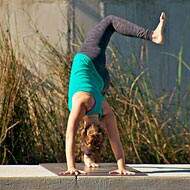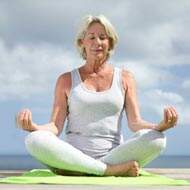- Raja yoga
- Yoga Stretches
- Jivamukti Yoga Poses
- Yoga Tree Pose
- Sun and Moon Yoga
- Wind Removing Pose
- Hare Pose
- Accomplished Pose
- Urdhva Mukha Pinch Mayurasana
- Revolved Abdomen Pose
- Raised Foot Pose
- Scorpion Pose
- Butterfly Pose
- Half Tortoise Pose
- Revolved Twist
- Balancing Stick Pose
- Cat Pose
- Supported Shoulderstand
- Crane Pose
- Handstand
- Happy Baby Pose
- Firefly Pose
- Scale Pose
- Side Plank Pose
- Upward Facing Two-Foot Staff Pose
- Reclining Big Toe Pose
- Stick Pose
- Revolved Head-to-Knee Pose
- Full Boat Pose
- Upward Extended Feet Pose
- Yoga arm balance poses
- Core Yoga
- Inversion Yoga Poses
- Seated And Twist Yoga
- Horse Pose
- Cobbler Pose
- Seated Wide Angle Pose
- The Compass Pose
- Half Crow Pose
- Bound Half Moon Pose
- Lotus Pose
- Reverse Warrior Pose
- Fixed Firm Pose
- Back-bend Poses
- Forward bend Poses
- Sarvangasana
- Ashtanga Yoga Poses
- Warm up poses
- Seated Poses
- Seated Forward Bends
- Chair Poses
- Standing Poses
- Standing Balancing poses
- Yoga Asanas
- Hatha Yoga Asanas
- Yoga Postures Online
- Partner Yoga Poses
- Advanced Yoga poses
- Restorative Yoga Poses
- Kids Yoga Poses
- Beginning Yoga Postures
Anusara Yoga Poses
1. What is Anusara yoga?
Anusara Yoga can be described as a modern form of Yoga, which was started in 1977 by John Friend, an American-born Yoga instructor. This relatively new form of Yoga is based on the traditional discipline of Hatha Yoga, which dates back to the 14th century.
However, Anusara Yoga shares basic elements of other ancient yoga disciplines too. One of these elements is the traditional “asana”, which deals with postures, development and self-purification by centering the mind and body. Though fairly new, Anusara Yoga has become one of the most respected disciplines of Hatha Yoga, with more than 1,000 licensed instructors and thousands of instructors in the making. Hundreds and thousands of students practice this form of Yoga across the world.
Anusara Yoga instructors are discouraged from following the didactic method, which means that they don’t have the tendency to “fix” student poses. Instead, they allow individual learners to develop on their own. However, instructors do inform participants about the Universal Principles of Alignment and provide them with other tools that can help learners progress and develop their own methodology of Anusara Yoga.
This discipline uses traditional yoga poses or asanas, but focuses on the alignment of the physical and mental being. Therefore, an Anusara Yoga sequence should include poses that –
- Challenge core muscles
- Increase balance
- Demand focus and mental concentration
However, there are no strict rules for practicing Anusara Yoga.
What is the Anusara yogic philosophy?
One of the reasons that Anusara Yoga is gaining so much popularity is its philosophy, which is epitomized by the “celebration of the heart” that seeks the good in all people and things. This discipline is based on the Tantric philosophy, which states that matter and the spirit are real phenomena, but are in an undeniable and perhaps even celebratory relationship.
The main objective of practicing Anusara Yoga is to get aligned with The Divine.
According to the proponents of Anusara Yoga, this discipline deals with goals of self-empowerment, self-esteem and overall positivity. Many medical experts also agree that a positive connection between the mind and the body can bring about significant physical improvement in an individual. Therefore people all across the globe are now taking up Anusara Yoga to deal with the stress and uncertainties of the modern world.
Moreover, Tantra Anusara Yoga honors students for their talents, differences and even limitations, regardless of their yoga experience and levels of ability.
2. Anusara yoga poses
Anusara Yoga makes use of traditional Yoga poses, but focuses on those postures that align the physical and mental beings. There are more than 260 asanas (poses) that are a part of Anusara Yoga. These poses can be divided into –
- Backbends
- Basic warm ups
- Hand balancing poses
- Inversions
- Miscellaneous poses
- Restorative poses
- Sitting poses, hip openers and forward bends
- Sitting twists
- Standing poses
- Supine poses
Given below are a few of the common anusara yoga postures –
- Ardha Chandrasana (The Half Moon Pose)
- Ardha Salabhasana (The Half Locust Pose)
- Makarasana (The Crocodile Pose)
- Parivritta Ardha Chandrasana (The Revolved Half Moon Pose)
- Parivritta Trikonasana (The Revolved Triangle Pose)
- Surya Yantrasana (The Sundial Pose)
- Ubhaya Padangusthasana (The Both Big Toe Pose)
- Urdhva Mukha Paschimottanasana (The Upward Facing West Intense Stretch Pose)
- Vaparita Salabasana (The Turned Locust Pose)
- Tadasana (The Mountain Pose)
- Virasana (The Warrior Pose)
- Sukhasana (The Easy Pose)
- Navasana (The Boat Pose)
3. The Benefits of Anusara Yoga
There are many physical, emotional and mental benefits that are associated with this discipline of yoga. Given below are a few of the common Anusara Yoga benefits –
- Increased ability to express feelings and the inner self
- Improved lung capacity through deep and mindful breathing exercises
- Higher immunity, which protects the body from infections and illnesses
- Reduction of stress, emotional disorders and mood swings
- Stretching of muscles, tendons and ligaments, which boosts strength and enhances posture
It is important to check with a doctor before practicing any form of yoga, including Anusara Yoga. People who are new to this discipline should make sure that they learn it from a licensed instructor.



